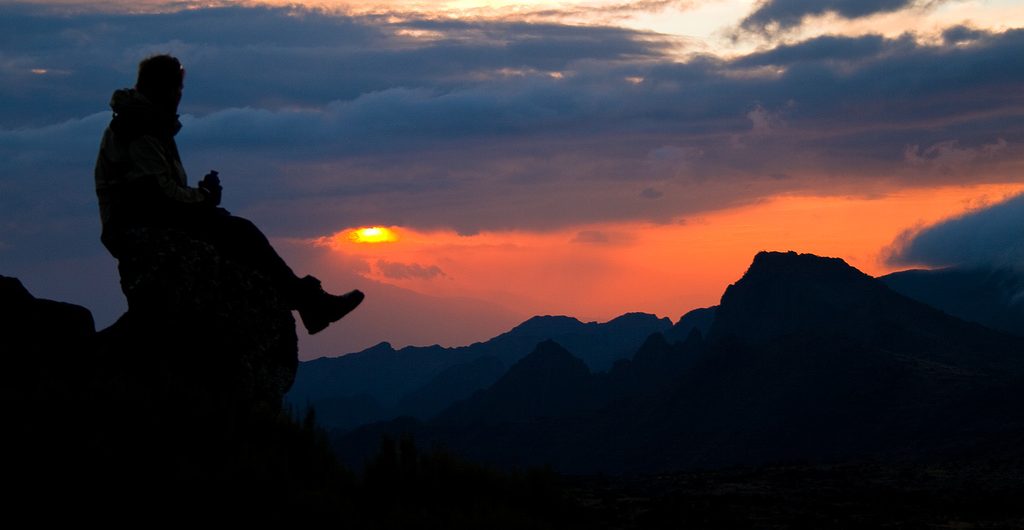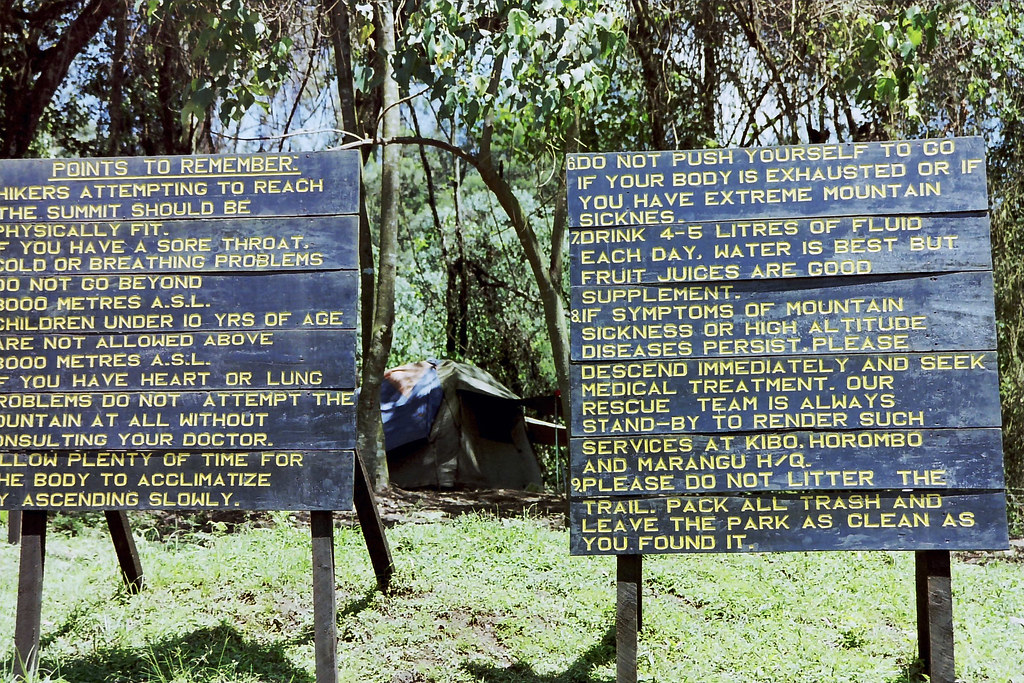Deaths on Mount Kilimanjaro like anywhere else in the world can be prevented by following the rules, proper climbing practices, taking care of yourself, and using the required mountain trekking equipment. Most people think of Mount Everest and its “Rainbow Valley” when they think about dangerous mountains to climb in the world. What they don’t understand is that nearly every other mountain, even Africa’s highest peak, Mount Kilimanjaro, has its own death stories.
 How does the fatality rate compare to other Mountains?
How does the fatality rate compare to other Mountains?
Every year, around 30,000 individuals attempt to climb Mount Kilimanjaro, with an average of 10 fatalities reported. While there are a handful of climber deaths each year, the number of individuals who die on Kilimanjaro is far lower than one might think.
Many deaths might be avoided if correct climbing skills and equipment were used.
When individuals die on Kilimanjaro by accident, their remains are removed off the mountain by the guides and their team with the assistance of a National Park ranger.
Mt Blanc, at 4,810 meters in the European Alps, which is over 1,000 meters lower than Kilimanjaro and attracts a similar number of visitors, claims the lives of around 100 people each year, making it significantly more dangerous for tourists, but putting it on a par with Mount Kilimanjaro when all deaths caused by activities on the mountain are considered.
Why are there dead bodies on Mount Everest but not on Kilimanjaro?
The use of helicopters or stretchers makes evacuation relatively simple, which is why you cannot stumble upon corpses around the mountain. When individuals die on Mount Everest, it can be difficult to retrieve their bodies. Thousands of dollars are spent for final repatriation from Mount Everest. This basically means that it is easier to retrieve dead bodies from Kilimanjaro than on Mount Everest.
Have There Been Deaths on Mt. Kilimanjaro?
Almost every large mountain, including Mount Kilimanjaro, has a certain danger of mortality connected with climbing it. According to current data, around 10 climbers die each year on the peak.
Because the present data only reflects the recorded number of climbers who were pronounced dead on-site, this estimate is rounded up. Because Kilimanjaro is such a large mountain, there is no way of knowing if residents died on the mountain and no one knew. On average, six to seven climbers perish on the peak each year.
Is Mt. Kilimanjaro Safe to Climb?
Mt. Kilimanjaro is remarkably safe when compared to other large mountain ranges. According to statistics, there is just a 0.03 percent risk of dying on the peak, which is a long cry from Everest.
Mount Kilimanjaro is not a death trap and climbing the mountain is not a matter of life and death. These numbers reported on average are accidents and they are not meant to scare you or put you off from climbing Kilimanjaro.
Every year, over 30,000 individuals take up the challenge of attempting to summit Mount Kilimanjaro. it may not sound good, but statistically, the numbers are not terrifying.
Kilimanjaro Death Zone
The peak of Kilimanjaro is around the same altitude as Mount Everest Base Camp. Climbers on Everest require oxygen above 26,000 feet, referred to as the “death zone.” In the death zone, it’s difficult to acclimate. If you use it to climb Mount Kilimanjaro, you risk disguising altitude sickness symptoms and disrupting the normal adaption process.
Is it hard to climb Mount Kilimanjaro?
No, it is not difficult to climb Kilimanjaro, in comparison to other mountains (or volcanoes) of like scale. This is one of the few mountains of this magnitude where reaching the summit does not need complete climbing abilities. It’s a lengthy, steady climb that takes many days of brisk walking to complete.
Almost anyone in relatively excellent health, even if they have never been trained in rock climbing, can climb this peak, according to most climbing professionals. That is something that cannot be said about other peaks of comparable height.
Why Do People Die on Mount Kilimanjaro?
People generally accidentally die when they fall over cliffs in most other mountains. Mount Kilimanjaro differs from other mountains of comparable size in that it does not need climbing to reach the summit. The altitude, however, remains a serious health concern on Kilimanjaro.
Scaling a mountain of Kili’s height might cause severe problems. The following are the most typical issues encountered by climbers:
- Dehydration. When it comes to the rate of water loss, Kilimanjaro is deceiving. As a result, you should drink enough water when climbing. You may become ill as a result of dehydration if you do not drink enough water.
- AMS. Acute Mountain Sickness, or AMS, is a condition that develops when you are exposed to high elevations and your physiological functions begin to be affected. Fifty percent of climbers will have AMS in some form. This isn’t deadly, but it can lead to more serious complications including pulmonary embolisms or pulmonary edema. These are dangerous and are a common cause of mortality on Kilimanjaro.
- Oxygen levels drop: As you climb the mountain, your oxygen levels will drop. Lightheadedness occurs as a result of this. You can potentially die from decreased oxygen mixed with additional AMS problems, however, this is uncommon.
- Hypothermia: Even in the summer, cold winds, snow, and storms may be found on Mount Kilimanjaro’s summit. If you do not dress appropriately, you will be judged. You can easily get fatal hypothermia–or just a terrible case of frostbite–if you do not dress correctly for low weather.
- Shortage of Supplies: People with underlying medical problems, such as diabetes, may perish if their medical supplies are left at the mountain’s foot.
How to prevent death on the mountain
If you’re going to climb, be sure you do it correctly. Finding a guide who knows how to avoid AMS and manage it if symptoms appear is one of them. Finding a qualified guide might be aided by conducting the study. Aside from hiring a good guide, there are a few additional things you may do to protect yourself, such as:
- Drinking a lot of water. Mountain climbing deaths have been connected to dehydration. For ascending a mountain the size of Kilimanjaro, experts believe that consuming at least four liters of water (about a gallon) is necessary. Most climbing teams will provide it to you for free and carry it for you.
- While climbing, get frequent checks. Without the right technology, the start of AMS might be difficult to detect. Many climbing guides will even give climbers a checkup twice a day to verify that they are in good enough health to continue.
- Slow and steady wins the race. Though there is no foolproof way to determine who is at risk for AMS, multiple studies have linked fast climbing to the condition. It’s better to take your time even if you don’t think you’re going too fast. Listen to your guide if he or she tells you to slow down.
- Take a deep breath. Stepping and breathing are an excellent ways to ensure that you stay aerated in many mountain ranges.You will be given oxygen masks after a certain point to ensure that you get enough air.
- Dress in layers and bring more than you think you’ll need. It gets cold at the top of Mount Kilimanjaro, even during the summer! There’s evidence to suggest that some climbers die from hypothermia as a result of “dressing lightly.” Make sure you don’t make this simple blunder!
- Before you even travel, have a checkup. Severe AMS might be exacerbated by certain previous conditions. Knowing whether you’re at danger can save your life, so make sure you notify your doctor about your intentions for a thorough examination.
Notable people that have died while on Mount Kilimanjaro
- Irish climber dies on Mount Kilimanjaro – https://www.bbc.com/news/world-europe-20895327
- When death rained down the slopes of Mount Kilimanjaro – https://tucson.com/news/when-death-rained-down-the-slopes-of-mount-kilimanjaro/article_64dd3557-6f80-55a5-8997-0f5851bab975.html
- Irish woman (35) dies while climbing Mount Kilimanjaro – https://www.irishtimes.com/news/ireland/irish-news/irish-woman-35-dies-while-climbing-mount-kilimanjaro-1.3156491
- South African rally driver Gugu Zulu dies on Kilimanjaro – https://www.bbc.com/news/world-africa-36823937American climber dies on Mount Kilimanjaro- https://apnews.com/aec8a84bc0e872ae27f234baf11d3417
- Dutch climber dies after reaching Mt. Kilimanjaro summit- https://nltimes.nl/2017/10/09/dutch-climber-dies-reaching-mt-kilimanjaro-summit
- Entrepreneur killed by a falling boulder while climbing Mount Kilimanjaro with his wife during year-long trip around the globe – https://www.dailymail.co.uk/news/article-3237080/Entrepreneur-TED-speaker-33-killed-falling-boulder-climbing-Mount-Kilimanjaro-wife-year-long-trip-world.html
What causes climbers to die on Kilimanjaro every year
The majority of Kilimanjaro fatalities each year are brought on by persons who have acute altitude sickness. Sometimes heart attacks are caused by underlying medical conditions. On Kilimanjaro, some routes, like the Western Breach, are also more prone to rock falls, which can harm or even kill climbers. A first aid kit and the required medication should always be kept in the backpacks of climbers with pre-existing medical issues as they make their way up Kilimanjaro.
Below are some of the reported deaths on Kilimanjaro
Even though Mount Kilimanjaro doesn’t feature anywhere near the most dangerous mountains in the world given its size, we cannot overlook the fact that climbing it poses a risk. Every year, about 10 people die attempting to climb Kilimanjaro due to AMS, hypothermia, dehydration, or a combination of these conditions.
- TEDTalk; East Bay entrepreneur, author Scott Dinsmore killed while climbing Mount Kilimanjaro
- South African rally champion, Gugu Zulu dies in Mandela Kilimanjaro charity climb
- How Aleksander Doba, Who Kayaked Across the Atlantic, Died at 74 on Mount Kilimanjaro’s Summit
- 60 year old Aussie climber Dies from Altitude Sickness While Climbing Mount Kilimanjaro
![]()


 How does the fatality rate compare to other Mountains?
How does the fatality rate compare to other Mountains?
Comments